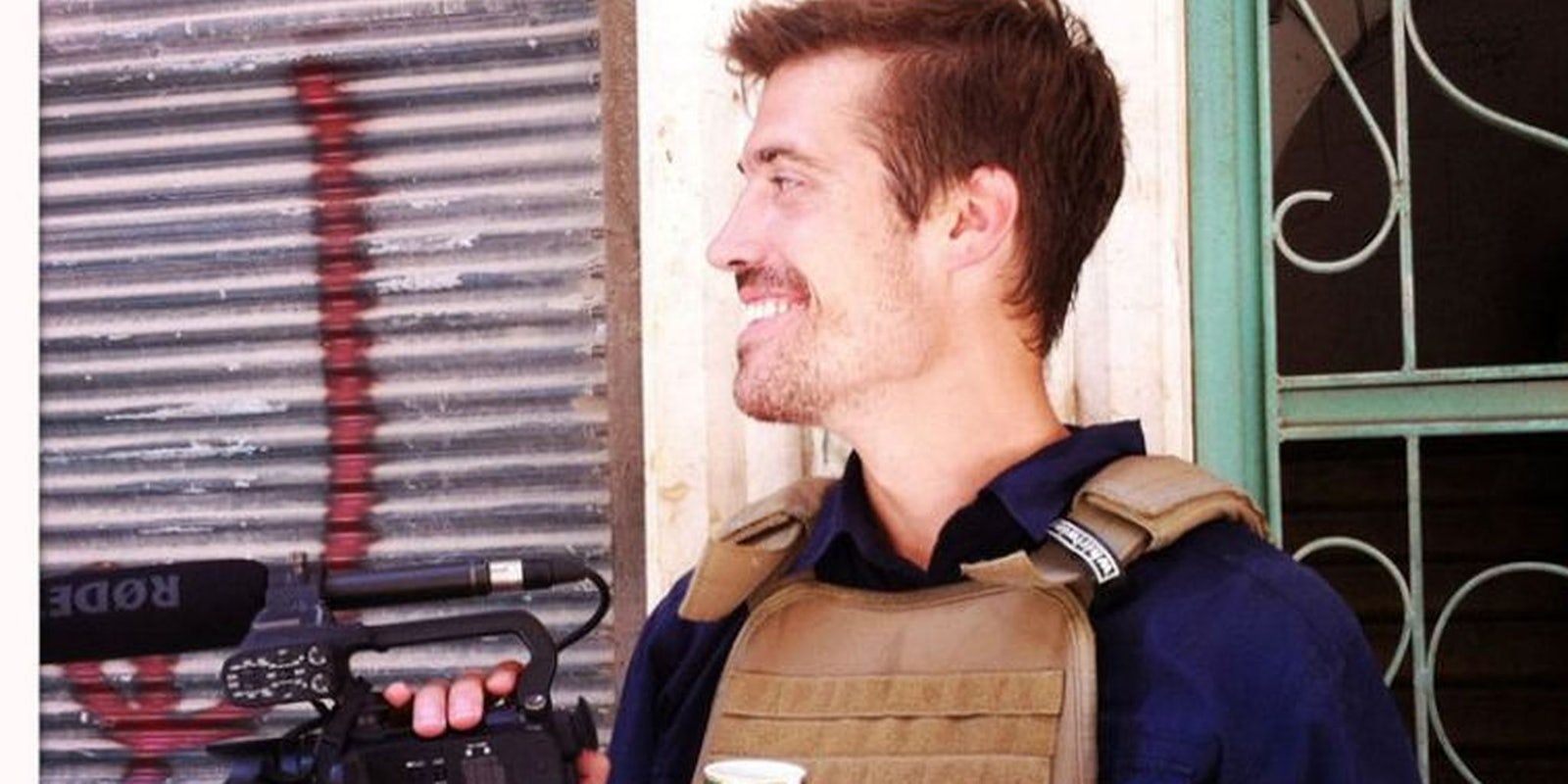The Islamic State released a video on YouTube they claim to be the beheading of American photojournalist James Foley as a warning against further airstrikes in Iraq by the United States. The video was quickly removed from the site.
Foley, 40, who went missing in Syria in November 2012, was kept on his knees and dressed in an orange prisoners’ jumpsuit. He was seen alongside another journalist, Steven Joel Sotloff, who also disappeared while covering the Syrian civil war in 2013. Sotloff will die, Foley’s executioner said, if Obama doesn’t change course on Iraq.
The executioner, covered from head to toe in black, spoke with what sounded like a British accent.
Before he was beheaded, Foley read a statement that called the American government his “real killers.”
Video and images of the beheading have been spread by ISIS jihadists and sympathizers on social networks like Twitter, leading to new calls to ban the accounts.
Dear @Twitter, every account that tweets the Foley video is also tweeting a direct specific threat to kill a specific human. Check your TOS.
— J.M. Berger (@intelwire) August 19, 2014
The hashtag #ISISMediaBlackout began trending after the video went viral on Tuesday as Twitter users urged one another to avoid retweeting or sharing any graphic images from the execution video.
From here on out, I won’t share any photo or video of violence intentionally recorded & released by ISIS for propaganda. #ISISmediaBlackout
— Hend (@LibyaLiberty) August 19, 2014
Major news outlets have been publicly debating whether or not to show the beheading video.
Out of respect for Jim #Foley, parents & friends, @ABC did not show the video of his execution – nor will we. Unfathomable darkness. #Iraq
— Jon Williams (@WilliamsJon) August 19, 2014
Internal office debate, preempted by it being taken down: do you link to the video?
— shani (@shani_o) August 19, 2014
My take was yes.
— shani (@shani_o) August 19, 2014
Journalism ethics apply to Twitter, too. If you wouldn’t show the video on your newscast or print it in your paper, don’t do it online.
— Andrew M. Seaman (@andrewmseaman) August 19, 2014
Syria, which has been described as the most dangerous place in the world for journalists to operate because of the rate at which they are killed or kidnapped, was not the location in which Foley was taken captive. [Correction: We incorrectly implied that Foley was not captured in Syria; he was, in fact, capature in Syria. Previously, in 2011, he was kidnapped in Libya. He made it out of Libyan detainment, but was again captured in Syria in 2013.]
In 2011, he was kept in detention for six weeks in Libya during the revolution against dictator Muammar Gaddafi. After the fighting was over, Foley was released unharmed.
While we think of James Foley today, let’s not forget the thousands of ordinary Syrians, Iraqis and others also murdered by ISIL.
— Scott Bridges (@s_bridges) August 19, 2014
Image via FreeJamesFoley


